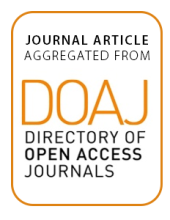Land Library
Welcome to the Land Portal Library. Explore our vast collection of open-access resources (over 74,000) including reports, journal articles, research papers, peer-reviewed publications, legal documents, videos and much more.
/ library resources
Showing items 1 through 9 of 10.The implementation process of the Syracuse’s Master Plan is characterized by the widespread use of “urban negotiation”.
One of the most challenging projects that the new Metropolitan city of Naples is going to face, concerns the regeneration of the ex-industrial areas located in the eastern zone of the city, characterized by the presence of the port.
According to the discipline of the Appraisal, the market values of urban property depend on characteristics of location, due to the area in question, and the peculiarities of the individual property.
The area of the Strait of Messina, covering as trip of land that runs from Gioia Tauro to Melito Porto Salvo, on the Calabrian side and from Milazzo to Giardini Naxos on the Sicilian side, is bounded by the Aspromonte Massif and Peloritani Chain that create a room in the landscape: the empty wate
The paper synthesizes the methodological approach that was used in the thesis to develop the project of a new transport hub in the port of Villa San Giovanni in service of the metropolitan area of the Strait.
The paper synthesises and compares the results of a research carried out on the energy potential of the provinces of Enna and Syracuse from the perspective of wind energy production.
A un anno dalla scadenza per il raggiungimento degli Obiettivi di Sviluppo del Millennio, fissata nel 2015, l’Indice Globale della Fame 2014 offre una prospettiva articolata del problema della fame nel mondo, che porta nuovi spunti al dibattito mondiale rispetto a dove concentrare gli sforzi nell
The Enna Province is characterized by a low degree of economic, infrastructural and industrial development. Its hilly territory is a fair combination of many different and integrated landscapes.
During the period immediately after World War II, planning in North America and Europe followed highly centralized, top-down, command-and-control approaches that were based on the rational-comprehensive model of planning, which implies an all-knowing, all-powerful government.


